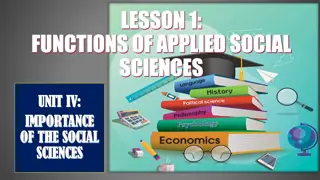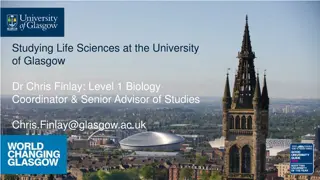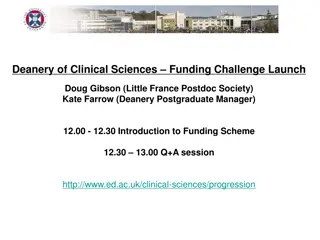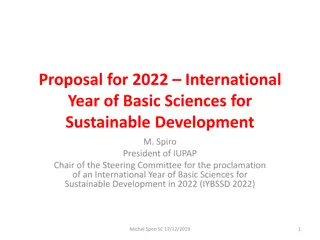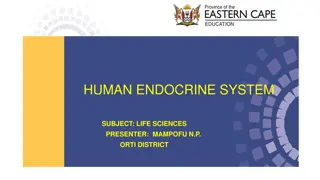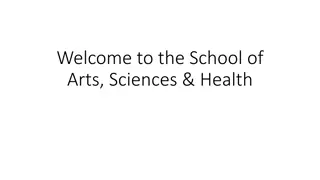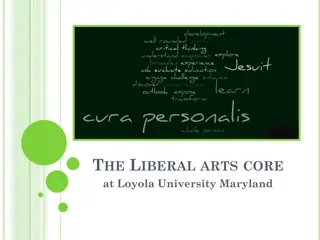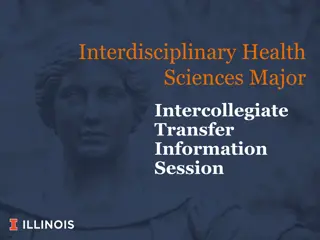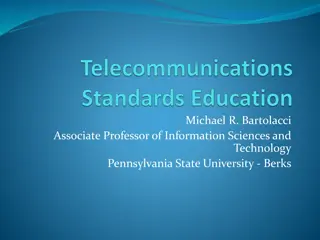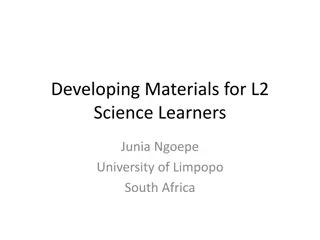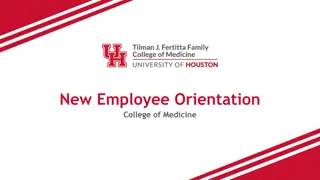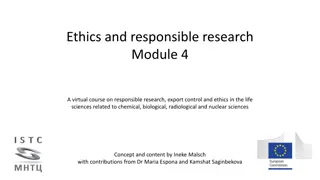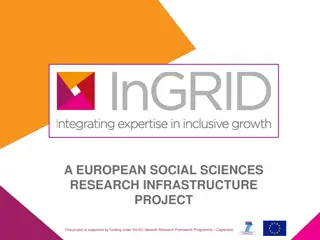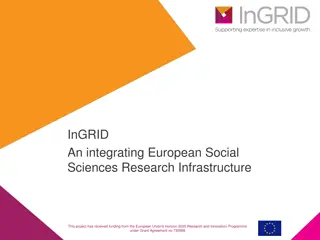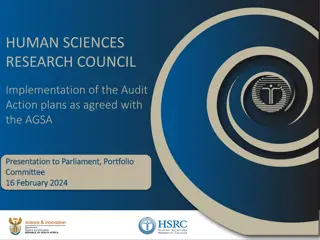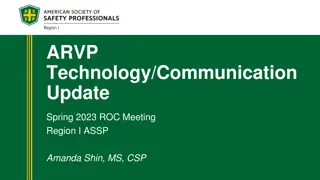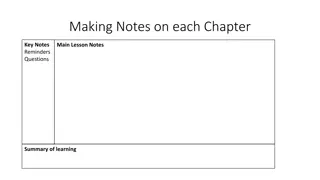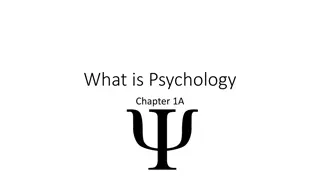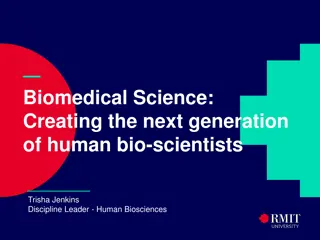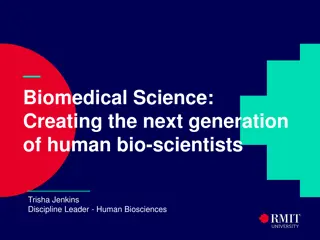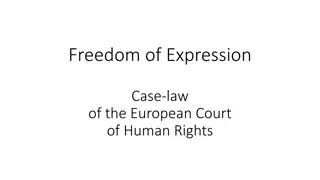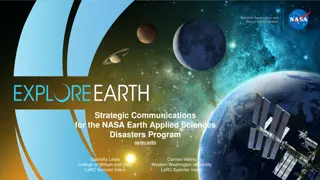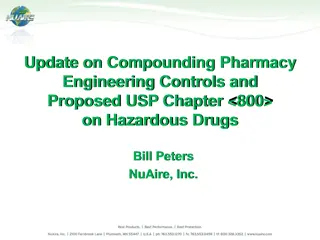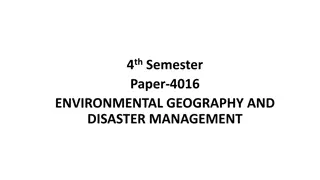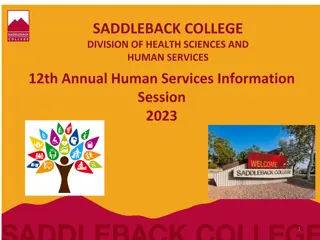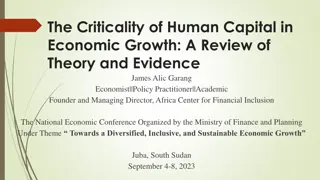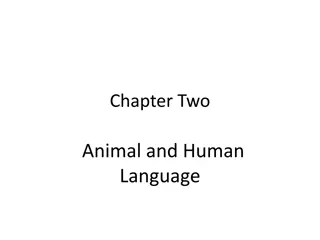Understanding Human Sciences: Chapter 2 Insights
In Chapter 2 of Integrating the Human Sciences, key definitions such as phenomena, subsystems, and causal links are explored. The study emphasizes developing a map of human science to understand the intricate relationships between various phenomena. It delves into economic growth as a phenomenon and the causes behind it. The chapter advocates for integrative work within specialized research communities to broaden perspectives and foster collaboration.
Download Presentation

Please find below an Image/Link to download the presentation.
The content on the website is provided AS IS for your information and personal use only. It may not be sold, licensed, or shared on other websites without obtaining consent from the author. Download presentation by click this link. If you encounter any issues during the download, it is possible that the publisher has removed the file from their server.
E N D
Presentation Transcript
Integrating the Human Sciences Chapter 2
Some Definitions A phenomenon is a thing that we study. A more precise definition comes in Table 2.1 when we list the key phenomena studied in human science. For the rest of this book, the word phenomenon refers exclusively to one of those things in Table 2.1 (or a component of one of those things) except on the rare occasions when we refer explicitly to natural science phenomena. However, a combination of phenomena and relationships is a causal link(s), not a phenomenon. A subsystem is a set of causal links within our map of human science. It only makes sense to study such a subsystem if the causal links within the system are much stronger than the myriad causal links connecting the phenomena within the subsystem to phenomena beyond the subsystem.
More definition Economic output is a phenomenon. Economic growth, an increase in economic output, is a realization of that phenomenon. Our study of causal links asks how a change in the realizations of one phenomenon influences the realizations of another phenomenon.
The Map of Human Science We can and should develop a map of human science, consisting of a large but manageable set of phenomena and the causal relationships among these. It is possible for scholars to share broadly similar understandings of the phenomena on our map. All subsystems in human science are open. That is, the phenomena within the subsystem relate causally to phenomena outside the subsystem. As a result, human scientists cannot identify causal regularities. They can, though, seek contextualized generalizations whereby the existence of a particular realization of X increases the likelihood of a particular realization of Y when there are particular realizations of other phenomena. For various reasons, a unified theory of all of human science is highly unlikely if not impossible.
Table 1.1 The Phenomena Don t Memorize it! Understand the Levels of Phenomena Understand how the Table clarifies the meaning of key phenomena by identifying what are and are not subsidiary phenomena
Integration Communities of specialized researchers can be very productive because of shared understandings. Yet those shared understandings limit what those communities investigate. There is thus a need for integrative work within fields to compare different approaches to the subject matter. This will also tie disparate pieces of research together, and militate against important insights being forgotten. There is a symbiotic relationship between specialized and integrative research (both within and across fields). Integrative research inevitably builds upon specialized research. In turn, integrative research informs specialized researchers of what they are missing and how their research fits within a broader whole. Specialized researchers are sometimes suspicious of integrative research. It is possible to develop a set of guidelines for integrative research that are comparable to the standards used to evaluate specialized research. We developed such a set.
Clarity There are huge costs of miscommunication and misunderstanding if scholars cannot share understandings of key terminology. Our map of human science clarifies the meaning of terminology by listing what sorts of thing a phenomenon is and what sorts of things it is not. Terminology that refers to a vaguely defined set of causal links encourages misunderstanding. It is generally best to specify which causal links one is investigating. We can and should achieve shared understandings of terminology associated with theories and methods. We can and should insist on clarity of expression.
Methods and Theories Each of the dozen methods (or the many theory types) employed in human science has strengths and weaknesses. These were summarized briefly. We can have the greatest confidence in a hypothesis that is supported by evidence from multiple methods (or theories). If methods point in different directions, we can triangulate. Our best understanding of any causal link will likely involve the integration of multiple theories. The use of multiple theories and methods also better allows us to establish the strength and importance and nature of a causal relationship. Focusing on causal links rather than theory testing renders human science better able to develop more comprehensive understandings.
Definitions of Method and Theory We can define a method as a means by which we obtain evidence of how the world functions, and proffer the dozen methods listed in the text as Wittgensteinian exemplars of what we mean by method. Our definition of theory is an attempt to specify in a logically consistent manner agency, action, decision-making processes, location, and time path with respect to any posited causal relationship(s). Note that what we are defining here is scientific theory about how the world works. We should carefully distinguish this from a set of philosophical theories that address how the world should work (ethics), how scholars should study the world (epistemology), and what is the meaning of life? (metaphysics).
Definitions of Science and Human Science Science is the effort to understand causal links (as defined above) among phenomena (as defined above) through the application and integration of theories (as defined above) and their evaluation by methods (as defined above) and integrative strategies. Human science, the subject of this book, is the study of the set of causal links involving the phenomena in Table 2.1. Though these basic definitions of science and human science are valuable, it is useful to add one further clarification: Science exercises judgment in the evaluation of evidence from all methods and seeks to identify and transcend possible biases.
Table 2.2 Strengths and Weaknesses of Methods Again, don t memorize it! The point should be obvious that each method does some things well and other things poorly.
Postmodernism; Culture Wars Postmodernists raised a set of valuable concerns about ambiguity, objectivity, reality, and a host of other issues. Yet there are strategies for addressing (imperfectly) all of these concerns and thus aspiring to enhanced human science understanding. We collectively should seek to judge the evidence and hypotheses, and should aspire toward consensus. The strategies outlined in this chapter, and especially integration, reduce the scope for ideological posturing within human science. arguments regarding particular


